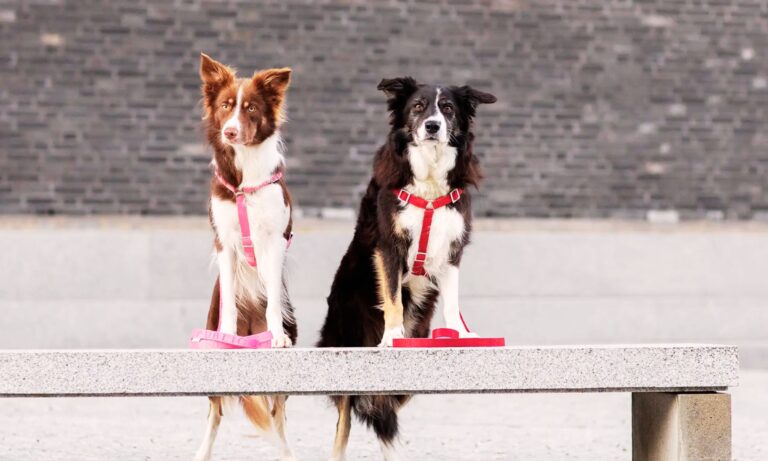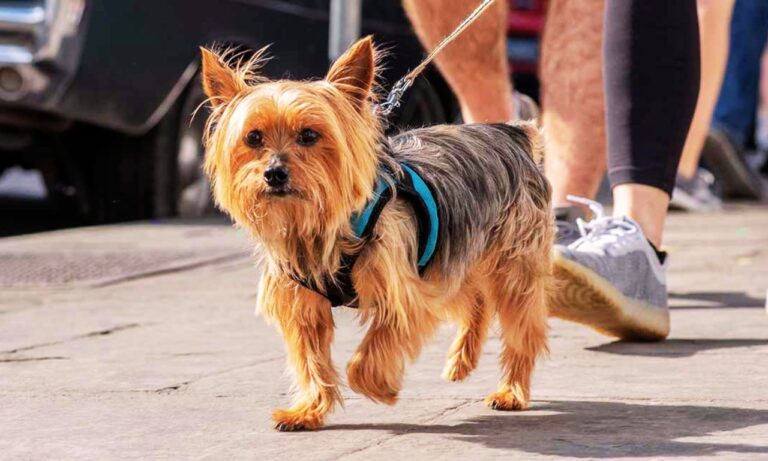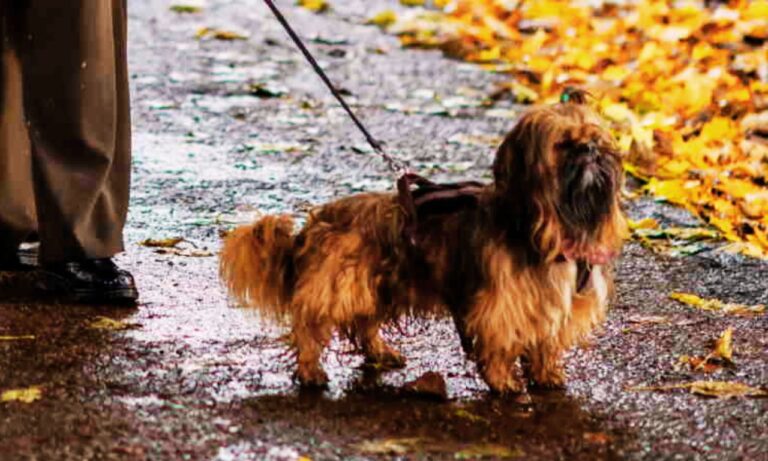Cane Corso vs Dogo Argentino: The Cane Corso is a powerful, ancient Italian guardian, weighing between 90–110 pounds and standing 23–28 inches tall. The Dogo Argentino, a fearless big-game hunter from Argentina, weighs 80–100 pounds and stands around 24–27 inches. Both breeds are muscular, loyal, and strong-willed — but when it comes to who would win in a head-to-head comparison of strength, intelligence, and trainability, there are key differences every owner should know.
Discover the benefits of using a harness by reading this guide on should a Collie wear a harness.
The battle between Cane Corso and Dogo Argentino isn’t just about muscle — it’s about endurance, prey drive, intelligence, and temperament. While both breeds are formidable working dogs with deep roots in protection and hunting, they each bring unique traits to the table. In this guide, we compare Cane Corso and Dogo Argentino on size, strength, behavior, trainability, and health to help determine who might win — not just in a fight, but in overall capability and compatibility with your lifestyle.
Whether you’re considering one as a family protector or want to know which dog is the more dominant alpha, this in-depth comparison will walk you through everything from bite force to loyalty. And yes — we’ll answer the ultimate question: In a fair match, who would truly come out on top?

Blog Highlights
ToggleBreed Overview: Cane Corso vs Dogo Argentino at a Glance
Both breeds are known for their physical dominance, but their purposes differ. The Cane Corso was bred for guarding livestock and property, while the Dogo Argentino was bred to hunt dangerous prey like wild boar and puma. This difference shapes their instincts and behavior.
| Attribute | Cane Corso | Dogo Argentino |
| Origin | Italy | Argentina |
| Purpose | Guardian, protector | Big-game hunter |
| Weight Range (Male) | 100–110 lbs | 85–100 lbs |
| Height Range (Male) | 25–28 in | 24–27 in |
| Bite Force | ~700 PSI | ~500 PSI |
| Temperament | Protective, composed | Bold, high-drive |
| Exercise Needs | Moderate to high | Very high |
| Trainability | High (with experience) | Moderate to high |
| Life Expectancy | 9–12 years | 10–12 years |
Cane Corso: What Makes Them Formidable
Size and Build: The Cane Corso stands tall and solid, with most males weighing between 100–110 pounds and females between 85–100 pounds. Standing at 25–28 inches for males and 23–26 inches for females, their bodies are built for power and intimidation. They have thick necks, wide chests, and a bulky but athletic frame — making them ideal as deterrents and defenders.
Temperament and Behavior: Despite their size, Cane Corsos are calm and composed. They are naturally wary of strangers, but deeply loyal to their families. This breed thrives when it has a job — whether it’s guarding, walking alongside you, or training in obedience or agility. Without mental stimulation, they can become destructive or overprotective.
Strength and Bite Power: The Cane Corso’s bite force is estimated around 700 PSI — among the strongest of any dog breed. Their jaws are capable of inflicting serious injury, which is why responsible handling, early socialization, and firm training are crucial.
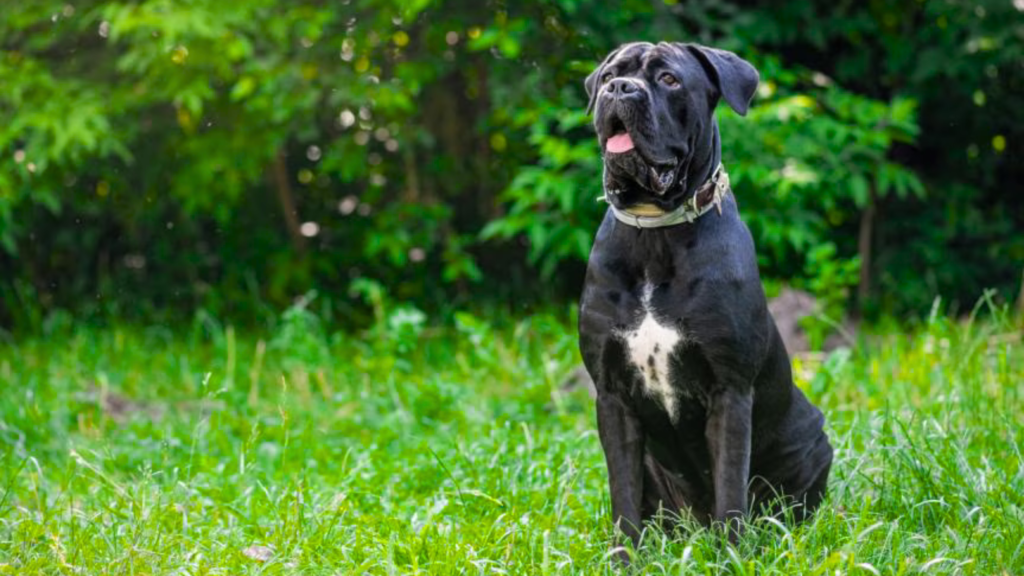
Training and Control: Cane Corsos are intelligent and eager to please, but they need strong leadership. They respond best to consistent, reward-based training and can learn complex commands, especially with a confident owner. They are not ideal for first-time dog owners.
Dogo Argentino: Argentina’s Big-Game Hunter
Size and Build: Dogo Argentinos are slightly more agile than Cane Corsos, weighing around 85–100 pounds and standing about 24–27 inches tall. They’re all muscle — with a white, sleek coat that highlights their athleticism. Bred to chase and take down wild prey, they are built for endurance and agility over bulk.
Temperament and Behavior: Dogos are high-drive dogs. They are confident, social, and intensely loyal, but have a strong prey drive due to their hunting roots. While affectionate with family, they may not tolerate smaller pets or unknown dogs unless raised with them from puppyhood.
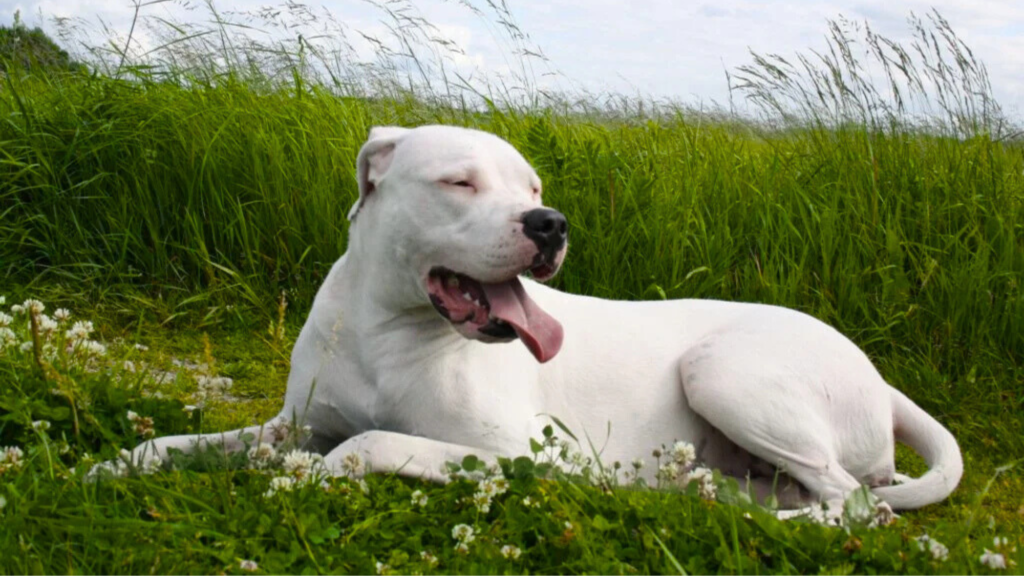
Strength and Bite Power: With a bite force around 500 PSI, Dogo Argentinos have powerful jaws — enough to hold down wild boars. Their strength is amplified by speed, tenacity, and sheer willpower.
Training and Control: Training a Dogo requires patience and early socialization. They are intelligent but can be stubborn. They respond well to positive reinforcement, especially when started young. However, their energy and drive make them unsuitable for passive or inexperienced handlers.
Learn if Dachshunds need special collars to provide the right support and comfort for their unique body shape.
Head-to-Head: Cane Corso vs Dogo Argentino – Who Has the Edge?
Strength: In pure strength and bite force, the Cane Corso wins. It’s heavier, more solidly built, and has a stronger jaw. However, the Dogo makes up for it with agility and endurance.
Agility and Endurance: The Dogo Argentino was bred for stamina. In a drawn-out challenge, especially in rugged terrain, the Dogo may outlast the Cane Corso due to its leaner build and higher energy levels.
Trainability: Both breeds are trainable, but Cane Corsos are slightly more eager to follow commands, making them better suited for advanced obedience. Dogos, while intelligent, can be more stubborn and reactive.
Protectiveness and Loyalty: The Cane Corso is more protective and territorial, making it a better guard dog. The Dogo is fearless and loyal, but its instinct is more to chase than to guard.
Aggression and Control: Neither breed is naturally aggressive when trained properly, but both can become dangerous in the wrong hands. Cane Corsos tend to be more controlled, while Dogos may act on instinct, especially with animals.

Who Would Win in a Fight? (Hypothetical Analysis)
We never promote or condone dog fighting. But in theoretical terms, if an uncontrolled situation were to arise:
- Bite Force: Cane Corso (~700 PSI) has the upper hand.
- Weight & Bulk: Cane Corso wins by 10–20 pounds on average.
- Agility: Dogo Argentino is quicker and more agile.
- Endurance: Dogo Argentino can maintain pressure longer.
- Pain Tolerance: Dogos have an unusually high pain threshold due to their hunting background.
Verdict: In a short burst of strength and bite power, the Cane Corso might overpower. But in a prolonged encounter with stamina, the Dogo could outmaneuver. It’s a close call, and variables like training, age, health, and experience matter greatly.
Check out the best dog collars for Border Collie to find durable, stylish, and comfortable options for your active dog.
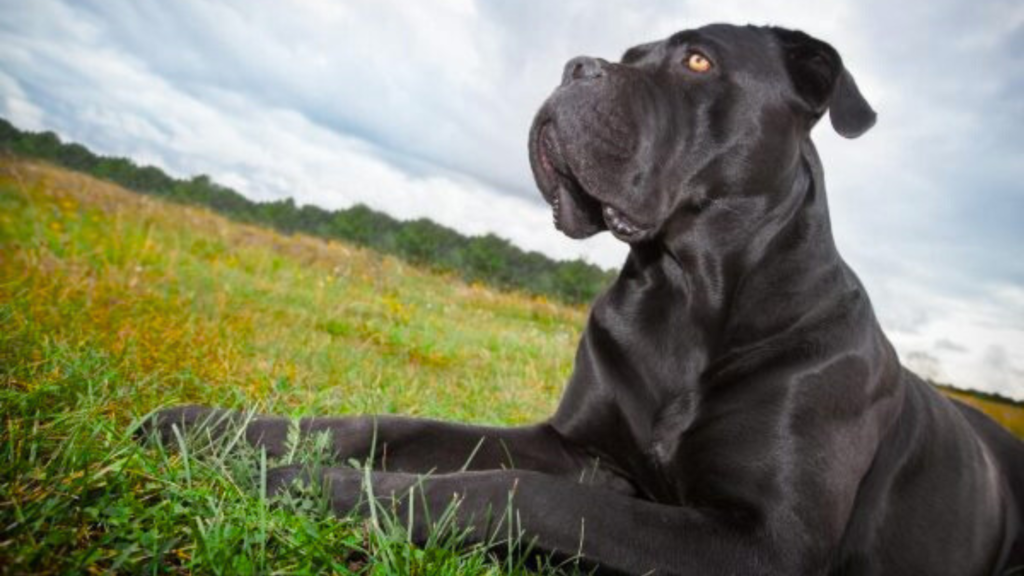
Feeding and Nutrition: Cane Corso vs Dogo Argentino
Cane Corso Diet Needs: Cane Corsos need 2,000–2,400 kcal/day depending on weight and activity. A protein-rich, high-fat diet (24–28% protein and 12–16% fat) supports their muscular frame. Many owners supplement with raw meats, glucosamine, and fish oils for joint health.
Dogo Argentino Diet Needs: Dogos need about 1,800–2,200 kcal/day. They benefit from a leaner, high-protein diet (26–30% protein) to fuel their energy and endurance. Foods should support muscle recovery and digestive health, especially with their active nature.
Exercise Comparison: High Drive vs Heavy Muscle
Cane Corso: Needs 60–75 minutes of daily activity. Walks, short jogs, playtime, and obedience drills work best. Avoid high-impact activity in puppies to protect joints.
Dogo Argentino: Requires 90–120 minutes of intense activity daily. Running, hiking, and scent-tracking games help burn energy. Without enough stimulation, they may become restless or destructive.
Understand if French Bulldogs can wear dog collars and how it affects their neck structure and overall health.
Health Concerns: Cane Corso vs Dogo Argentino
Cane Corso:
- Prone to hip dysplasia, bloat, and eyelid issues
- Watch weight gain; obesity is a common problem
- Lifespan: 9–12 years
Dogo Argentino:
- Prone to deafness (due to white coat genes)
- Skin allergies and thyroid issues
- Lifespan: 10–12 years
Regular vet checkups, early screening, and joint supplements help both breeds live longer, healthier lives.
Training Goals for Each Breed
Cane Corso Training Checklist:
- Leash control from 12 weeks
- Socialization with people and dogs
- Crate training and impulse control
- Off-leash recall with experienced handlers
- Protection training (only with professionals)
Dogo Argentino Training Checklist:
- High-level recall commands
- Prey drive management
- Supervised dog-to-dog interaction
- Advanced obedience to control excitability
- Agility training for focus and stamina
Family Compatibility: Which Breed Is Right for You?
Cane Corso in the Home:
- Great with kids when raised with them
- Needs a structured home and confident owner
- Less tolerant of strangers or unknown dogs
- Better suited for suburban or rural homes with space
Dogo Argentino in the Home:
- Gentle with family, even children
- Needs early socialization with other pets
- High prey drive — not ideal with cats or small dogs
- Thrives in active homes that enjoy hiking or outdoor sports
Conclusion: Cane Corso vs Dogo Argentino – Who’s the Real Winner?
When comparing Cane Corso vs Dogo Argentino, the true winner depends on your needs, experience, and lifestyle. The Cane Corso wins in brute force, intimidation, and guarding ability. The Dogo Argentino triumphs in endurance, agility, and prey drive.
If you want a loyal, commanding guard dog with a calm temperament, the Cane Corso is the better fit. If you’re an experienced dog owner seeking an athletic, high-energy companion capable of adventures and bold challenges, the Dogo Argentino may be your champion.Ultimately, both are powerful, loyal breeds that demand strong leadership, consistent training, and daily exercise. Choose wisely — because once bonded, either of these dogs will protect you with their life. Learn what size collar for a Rottweiler is ideal by following this detailed guide to ensure a perfect fit for your dog’s comfort and safety.



